We wish to share this secret on how to run Instagram ads that is effective and with a high conversion rate. Boost any post to turn it into an ad, or use Ads Manager for more advanced multi-platform campaigns. Easily turn your Instagram posts into ads that convert more at a cheaper rate.
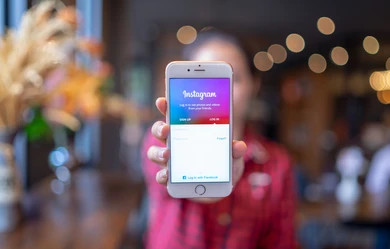
What Are Instagram Ads?
Instagram ads are posts that pop up on a user’s Instagram feed. The business or person advertising pays to display the content across Instagram, which is often accompanied by a “Sponsored” label.
This article will guide you on how to run Instagram Ads effectively
How to run Instagram Ads
Instagram is an effective way to generate sales, create awareness and build engagement. A recent report showed that 75% of users take action on Instagram like visiting a website or making a purchase when they have seen an ad.
Instagram is owned by Facebook, hence, uses Facebook’s advertising platform. This guide may be about how to run Instagram Ads, but all of the ad setup, budgeting, scheduling, and creation is done via Facebook.
You need to have an Instagram business account
2 ways to advertise on Instagram
You can run advertising on Instagram in two ways
- Facebook Ads Manager
- Direct from Instagram
The best way to run ads on Instagram is via the Facebook Ads Manager that possesses more functionality than advertising within Instagram;
How Much Do Instagram Ads Cost?
There are many factors that affect the cost of Instagram ads. It ranges from your audience to your ad feedback. “There’s a lot that goes into understanding how to run Instagram Ads” according to Andrew Tate from AdEspresso.
Though the cost of your specific Instagram ad will be unique to you (after all, not all ads are the same), the average cost-per-click for Instagram ads is around $0.70 – $0.80. This figure comes from an analysis of more than $300 million of ad spend and this is around ₦252 – ₦288.
What you will gain from this post?
The post is delivered in a simplified process into 4 key steps:
The campaign objective is the goal or desired outcome of your Instagram advertising campaign. It might be to increase brand awareness, generate traffic, or make sales.
Targeting: This deals with finding audience groups that will help you achieve your campaign objective.
Creative: This is the creation of images, videos, slogans, and call-to-actions that motivate Instagram users to engage with your ad.
Tracking: Measurement of the results and impact of your Instagram advertising campaign according to the objective you set.
1. Creating Your Campaign Objectives
This is the goal or the desired outcome of your Instagram advertising campaign. It is what you want people to do when they see your ads.
The campaign objective chosen influences how your ads are optimized and how you pay for them.
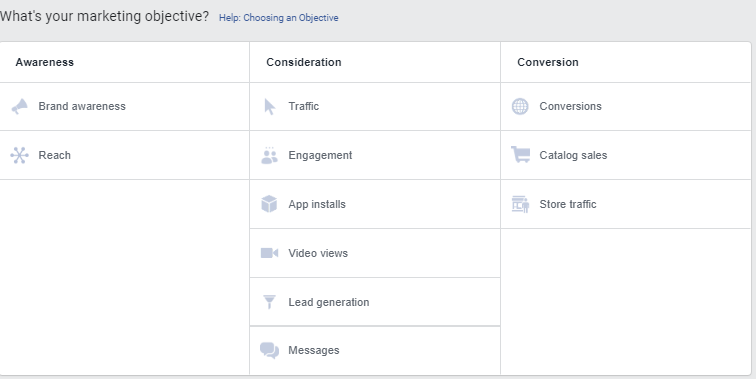
Note that not all campaign objectives available on Facebook can be used on Instagram.
The campaign objectives on Instagram are as follows:
- Brand awareness: This goal ensures that your ads are shown to more potential people likely to be interested in your service/brand. How does Instagram determine this? It’s a secret, but this goal will likely expose some new and relevant people to your brand
- Reach: If you wish to maximize the number of people who see your ad, then choose this goal. It’s also worth noting that if you’re looking to run an Instagram Story ad “reach” is currently the only objective you can choose.
- Traffic: Want to get more people to your website or app store to download your app, this is the right option.
- App installs: Send people to the store where they can purchase and download your app
- Engagement: Who doesn’t want more likes, shares, and overall engagement? If your goal is engagement, one thing to note is that you currently can only pay for “post engagement” on Instagram. Facebook will allow you to pay for “page engagement” and “event responses,” but this is not currently available to Instagram.
- Video Views: This goal is very straightforward and doesn’t require additional setup steps.
- Lead Generation: Need leads, select this objective. Just note that lead generation ads do not provide all of the same pre-filled fields as Facebook. Instagram currently only supports email, full name, phone number, and gender. These ads also have more of a barrier than Facebook lead generation ads, since when leads click to open the ad they’ll need to click through to fill out their information. On Facebook, leads can fill out their information without all the additional clicking.
- Conversions: Get people to take valuable actions on your website or app, such as adding payment info or making a purchase
For businesses/brands who wish to sell eCommerce products (conversions) or to run a remarketing campaign for users who visit your website, you have to create and install a Facebook pixel first.
What is a Facebook Pixel?
Facebook pixel is a small piece of code that you can place on your website to track visitors and conversions.
How to create a Facebook pixel
- Go to your Pixels tab in Events Manager.
- Click Create a Pixel.
- Read how the pixel works, then click Continue.
- Add your Pixel Name.
- Enter your website URL to check for easy set up options.
- Click Continue.
How to Add the Facebook pixel to your website
Once you’ve created your pixel, you’re ready to put the Facebook pixel code on your website. For instructions on how to do this, choose your setup option:
- Manually add pixel code to website
- Use a partner integration
- Email instructions
The pixel informs Facebook of any kind of tracking activity selected and in this case most likely conversion.
Facebook then matches that conversion against the set of people who clicked on your Instagram ads so that you can see how many sales you made from that ad.
2. Setting Up Your Instagram Advertising Targeting
This is where you need to optimize for you to get the best result. — as in, they determine who is likely to perform the action you specified in your campaign objective.
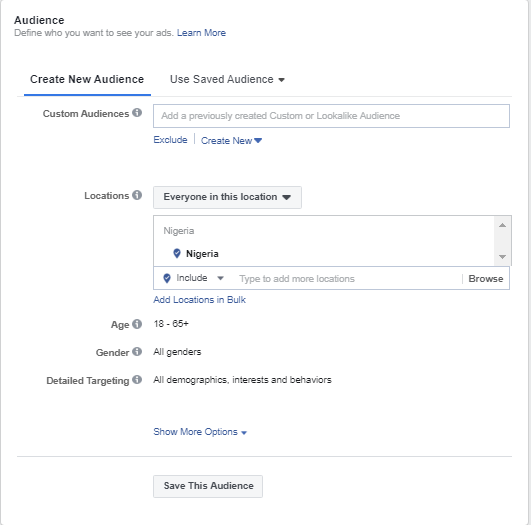
You need to define your audience and tailor it to your product offering. Who is most likely to buy/pay for it. If you sell perfumes, you definitely need to target mostly women, area, and others.
There are some targeting options like on Facebook ads, including targeting based on location, demographics, interests, behavior, and more.
Location: THis means selecting a target country, region, state, city, zip code, exclude or include certain places, location targeting will allow you to do all of this and more.
Age: Allows you to target ranges from age 13 to 65+
Gender: Choose between all, men, or women
Languages: Facebook recommends leaving this blank unless the language you’re targeting is not common to the location you’re targeting.
Demographics: In the “Detailed Targeting” section, you’ll find demographics, which have several sub-categories with even more sub-categories under those. For instance, you can target “Demographics” > “Music” > “DJ, producers” > “artist”
Interests: Interests is also under “Detailed Targeting” with multiple sub-categories to dive further.
Behaviors: Another “Detailed Targeting” option with multiple sub-categories to explore. This may be purchasing behaviors, job roles, anniversaries, or other behaviors the options seem endless.
There is the option to create a Custom Audience to reach people who have already interacted with your business, or a Lookalike Audience to reach new people on Facebook who are similar to your most valuable audiences.
Custom Audiences:
Facebook Custom Audiences are groups of people who have already visited your website or shared their contact info with you.
How to build custom audiences?
For you to build a custom audience, you do not select any of Facebook’s built-in targeting options.
The Ads targeting these groups tend to perform well because they’ve already expressed an interest in your business!
It involves you uploading a database of emails or phone numbers and Facebook matches these up with the Facebook users. You can then target ads to this audience on Instagram.
Let us use an eCommerce business, for Instance, if you collect information about your audience (email, phone number, first and last name, city, state/province, country, etc.) through a email newsletter, surveys, interviews, or otherwise, you can upload this data to Facebook’s Ads Manager.
- Go to the Ads Manager, open Tools
- Select the Create New dropdown and choose Custom Audience.
- Next, tap the “Add customers from your file.”
- Once you completely uploaded your data, Facebook will create a new custom audience that you can target with your Instagram ads.
Lookalike Audiences
This is a type of custom audience that allows you to create super-specific targeting for your ads. These audiences tend to convert well because they target people who are most like your established customers!
Lookalike Audiences allows you to take your custom audience and then serve them ads similar to that audience.
Facebook identifies the common qualities of the people in your audience, such as demographics or interests, and then finds people who are similar to them in the country you choose
3. Building Your Instagram Advertising Creative
This is very important in how ads perform. It is a science and an art as it helps to impact or marr the ads performance.
Before you run an ad, you need to think about what your objective is, who are you trying to reach, and what kind of message and tone will motivate your followers to engage with your ad.
Types of Instagram Ads
Instagram also has many other ad types. The most interesting ones include:
- Stories Ads (Instagram photo ads)
- ideo Ads
- Collection Ads (Instagram carousel ads)
- Slideshow Ads
Instagram photo ads: This enables businesses to share their story and feature products by visually engaging imagery. For beginners, you can start with photo ads as it is the easiest to set up and tend to perform well.
Instagram Carousel ads: With Carousel ads, Instagram users can swipe to see additional images, and a call-to-action button takes them to a website to learn more.
Instagram video ads: Ensure to make your video ads a minute long and try to get the users attention in the first five seconds, else you lose it. When designing new video ads, try creating content that blends organically into your followers’ feeds.
Try not to overwhelm your audience with a ton of information!
Instagram Slideshow Ads: Advertisers can create lightweight video ads from a series of still photos. This is suitable for businesses that don’t have time or resources to create video content. They can quickly create videos from assets they already have!
Step by step guide to create your first Instagram ads
We will be using the Facebook ads manager. To access Facebook Ads Manager, you’ll need a Facebook account with access to a Facebook Business Page.
Step 1: Link Your Instagram Account to Your Facebook Page
Now you need to have linked your Instagram account to your Facebook Business Page.
- Open your Facebook Business Page.
- Go to Page Settings > Instagram.
- Click the “Connect Account” button.
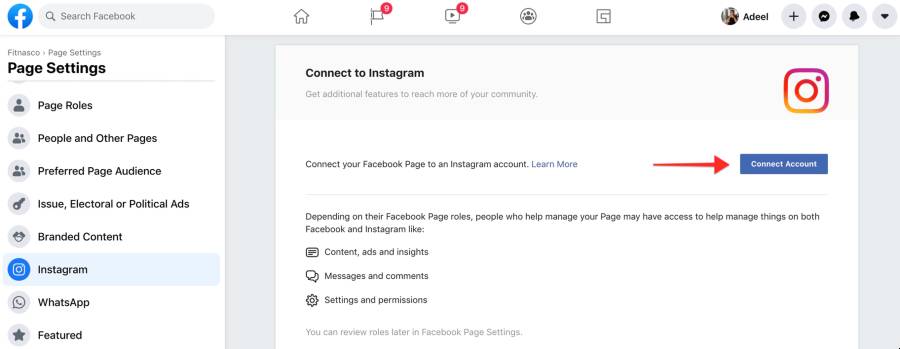
Step 2: Create a Campaign

- From Facebook Ads Manager, click on “+ Create Campaign” near the top left corner of the screen.
- This is where you pick your campaign objective.
- If you wish to increase conversions, you need to have a conversion pixel installed on your website.
- You can do this by selecting “Create a Pixel” on the Create New Ad Set Page.
Step 3: Create Your Ad Set: After the selection of your campaign goal, it’s time to create your Ad Set. This page enables you to define who you want to see your ads, and how much money you want to spend.
You need to select or target a specific country, gender (if promoting a gender-specific offer) and age group.
We encourage you to narrow it down as possible with your target marketing! The more targeted your ads are to the right audience, the better chance you have in achieving your campaign objective.
Step 4: Name your campaign: After choosing your objective, Facebook Ads Manager will let you give a name to your campaign.
Next, decide whether you want to test campaigns against each other to determine which strategies work best.
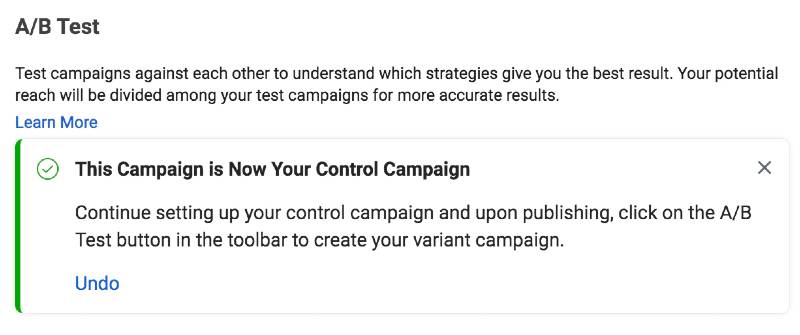
Step 5: Set your budget and schedule: You can define how much you want to spend on your ad campaign and for how long.
Here, you can choose between Campaign Budget Optimization and manual setup.

Facebook Ads Manager also lets you choose between a daily and lifetime budget. There are two options for your budget, daily budget, and lifetime budget.
Step 6. Choose your target audience: Through audience targeting, you can set up your Instagram Ads to reach certain demographics, interests, and behaviors.
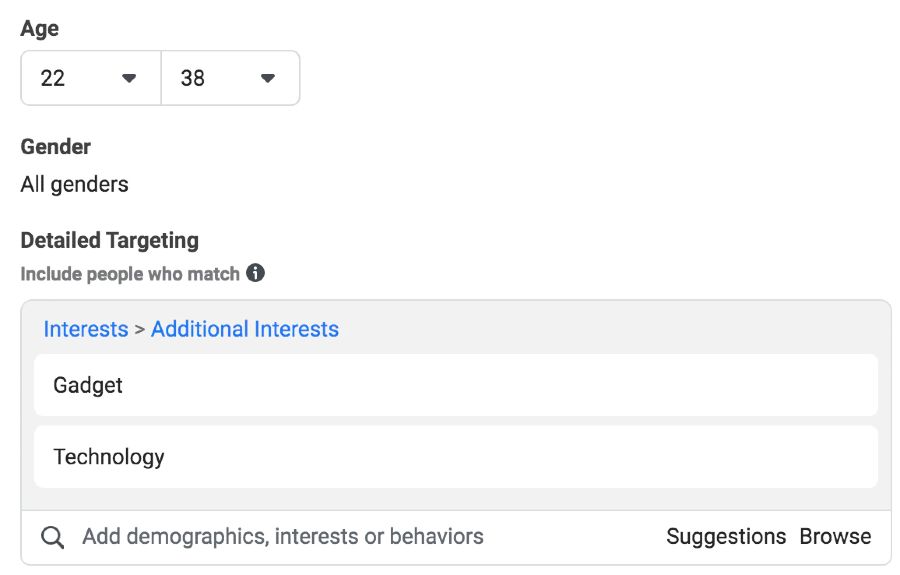
If you have any Custom Audiences already created, you can select them for targeting with your Instagram ads at this point.
Step 7. Select your ad placements: Facebook Ads Manager gives you two options for ad placements:
- Automatic placements: This feature automatically displays your ads across multiple properties based on where they’re likely to work best.
- Manual placements: You get to chooose the properties where you want your ads to appear.
Step 8. Create your first Instagram ad: The last step is where you pick a specific ad format, upload an ad creative and write your ad copy.
For “Conversions” as the campaign objective, you get the opportunity to pick from a variety of call-to-action texts. Choose the one that’s relevant to your campaign and target audience.
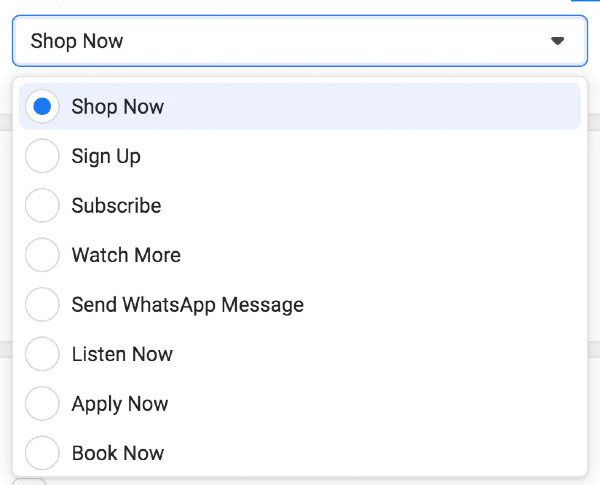
Finally, to the right of the text editor, you’ll be able to preview how your ad will look on Instagram. You can also see how your ad would look in other formats.
You can run the ad on Facebook and Instagram, but if you only want to run it on Instagram, make sure the other distribution options have been removed.
Once you’re done with everything, tap the green “Publish” button to start running Instagram ads for your business.
4. Track Your Engagement and Conversions
If you wish to optimize ads, as a result of the tracking recorded! This helps you to improve your ads and understand how to better run subsequent ads in the future.
You can use Facebook’s Business Manager or you might want to use the Power Editor.
If you have any questions, please leave a comment below and a member of our team will get back to you
Read also: